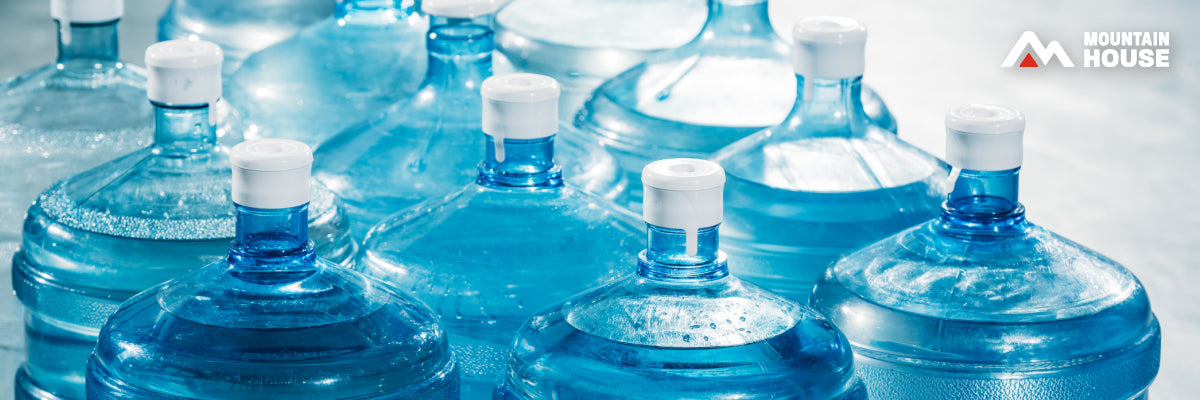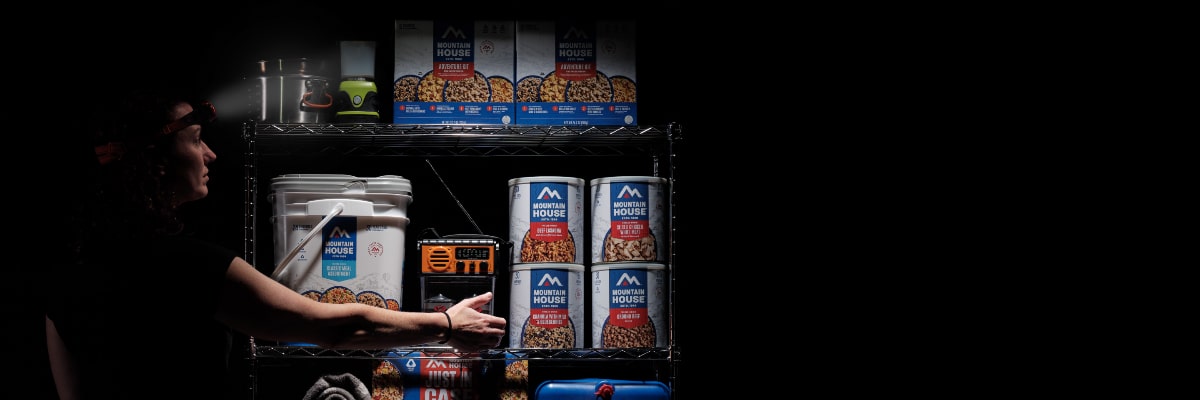Inspired for an Adventure? Check out Beef Stroganoff - Pouch and Beef Stew - Pouch
Free Ground Shipping On All Orders
Over 2,100 Reviews
Add description, images, menus and links to your mega menu
A column with no settings can be used as a spacer
Link to your collections, sales and even external links
Add up to five columns
Add description, images, menus and links to your mega menu
A column with no settings can be used as a spacer
Link to your collections, sales and even external links
Add up to five columns


We all understand the essential nature of water; it goes without saying." What does need to be emphasized is the importance of stockpiling an emergency water supply in the case of a natural disaster, water main issue, well breakdown, or other contingency.

Image by rawpixel.com on Freepik
In this guide, we’ll explore how to store water for emergency situations, a fundamental part of any emergency preparedness plan.
Determining the Amount of Water Needed
Before digging into the nitty-gritty of how to store water for emergencies, let’s talk about how much water to store in the first place!
The average normally active person requires a minimum of a half-gallon (two quarts) of drinking water per day. Based on that daily need—plus water for washing, food prep, and tooth-brushing—it’s generally recommended that you stockpile at least a gallon of water per person per day in a two-week supply.
It follows, then, that how much water you’re storing for emergency use depends on the size of your household. And most definitely, don’t forget about your pets!
But bear in mind that in a hotter climate—or if your household includes a nursing mother or individuals with particular medical conditions—you may well need to stockpile more water than that bare minimum quantity. The same goes in the event of illness or injury, which, unfortunately, is a definite possibility in an emergency situation such as a natural disaster.
Furthermore, you might want to beef up your emergency water supply beyond the minimum recommended amount to account for the possibility that, in some more extreme disaster or survival scenarios, more than the usual amount of physical exertion each day may be demanded.
As the U.S. Department of Homeland Security’s Ready.gov notes, though, people in emergency situations should generally not ration water unless directed to by authorities, even if supplies are running low. We quickly get into physiological trouble—and enter a life-threatening condition—when we don’t drink enough water. Keep drinking the amount required to adequately sustain you, even if it means that the next day you’re going to need to focus on finding or creating a new water source.
Choosing the Right Water Storage Containers

It’s recommended to store your emergency supply of water in one of the following forms:
- Commercial, unopened bottled water
- Food-grade containers.
If using your own container, confirm that it’s food-grade quality and make sure to clean and sanitize it (more on that in the next section).
If possible, avoid glass containers and stick to less breakable plastic. If you do need to use glass jugs or bottles, store them with plenty of protective padding.
You shouldn’t use any container that has held chemicals or otherwise toxic materials for storing water. The Federal Emergency Management Agency (FEMA) also recommends against selecting plastic milk or fruit juice jugs for water storage, as it’s challenging to completely remove their protein or sugar residuals (respectively), which then become a potential medium for bacterial growth.
Treating Containers & Tap Water for Storage
If you’re using your own food-grade containers for water storage, be sure to clean them first with soap and water and then sanitize them with liquid household chlorine bleach. Ready.gov suggests a sanitizing solution of one teaspoon of liquid household chlorine bleach per quart of water.
In terms of treating tap water itself for storage, you can use the same methods and equipment for sterilizing, filtering, and purifying as you do in the backcountry. These include boiling water, chemical tablets, and a water filter or purifier with pore sizes of one micron or smaller. You can also use unscented liquid household chlorine bleach with a concentration of 5.25 to 6% sodium hypochlorite, using an eighth of a teaspoon per gallon of water, letting the treated water stand for a half-hour, and confirming a faint bleach odor. In the absence of the latter, repeat the bleach application at the same dosage and let it stand for 15 minutes before checking again for the odor. (Still no faint odor of bleach? You should seek another water source to treat.)
Storing Your Water
If you’re using your own suitable, sanitized plastic containers for water storage, fill them all the way to the top so that there’s no overlying air space. If you’re using a larger-capacity container—such as a 55-gallon drum—fill it where it's going to be stored.
Label your bottles and containers clearly to designate them as an emergency water supply. Further, label water containers with the date filled and the method of water treatment used.
Whether it’s commercially bottled water or your own-filled containers, store your emergency water supply in a cool, dark place well away from any toxic, chemical, or strong-smelling products. (Fumes and odors can seep into water even when it's sealed away in a bottle or jug.)
Maintaining Your Emergency Water Supply
It’s important to properly maintain your emergency water supply. Check the best-by dates of bottled water and restock as necessary. Assess the water in containers you’ve filled yourself for cloudiness or other evidence of contamination, and if you see such evidence, replace the water. Even in the absence of signs of contamination, replace such water on average every six months to a year. (You can use the discarded water for dishwashing, watering plants, or other safe, non-drinking uses.)
How to Use Your Emergency Water Supply
Many larger water storage containers have spigots for accessing the water supply; pumps may be needed for bigger vessels. If you use any utensils to retrieve water from a container—cups, ladles, and the like—be sure to clean them beforehand. Avoid touching the stored water with your hands.
Long-stored water often develops a flat flavor. You can often remedy this by pouring the water between two (clean!) containers a few times to oxygenate it.
Alternative Emergency Water Sources
If you don’t have an adequate stockpile of safe water, you may need to obtain water from other, worst-case-scenario sources in the event of an emergency.
You can use, for example, water from your hot water heater or your own household pipes (turning off the main water supply to the house beforehand to prevent backflow contamination), so long as your city or well water supply hasn’t been contaminated. Learn more about the specifics of accessing water heater or water-pipe water in this primer from the Portland, OR-based Regional Water Providers Consortium.
Outside, natural water sources such as streams, ponds, and lakes are other possibilities, so long as you adequately disinfect and treat the water. You can also try to collect rainwater.
Stockpile Mountain House Along With Your Emergency Water Supply
Our just-add-water, freeze-dried meals here at Mountain House make ideal emergency provisions! Explore our emergency and survival food collection and prepare yourself for the unexpected.

How to Rotate Emergency Food: FIFO and Other Rotation Methods

The First 72 Is on You: Survival Kit Checklist + Printable PDF


Stay Hungry for Adventure
Sign Up for Delicious Outdoor Meals & Exclusive Offers!
By clicking ‘Join Now’, I agree to the Terms of Service and Privacy Policy.


Join the adventure
©2026 Mountain House — All Rights Reserved.
Your Cart is Empty
Continue ShoppingYour Cart
Subtotal
$0.00
EXPRESS PAYMENT METHODS AVAILABLE IN CHECKOUT
Taxes and Shipping Calculated at Checkout
Your ExpertVoice deal.
$[Deal Price]
$[Original Price]
Discount applied at checkout.
On sale now — lower than your ExpertVoice discount.
Not eligible for ExpertVoice discount.














